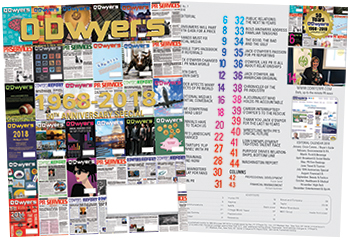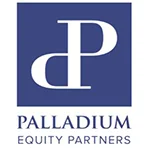|
|
I met Jack O’Dwyer in 1987 when he launched his monthly magazine, O’Dwyer’s PR Services Report. Jack approached me to write a monthly PR agency management column.
At the time, I owned a general NYC-based CPA firm. I had one client, Creative Systems Group, a new PR firm formed by three executives from Burson-Marsteller. Jack even offered to pay me for the column, but I turned him down because I saw PR value for my business in having a monthly full-page column, photo and byline. I did the column for nine years and passed the baton to Richard Goldstein, CPA, who has written the column ever since.
Jack was also the person who suggested that, as a financial person and columnist, I was in a perfect position to do financial benchmarking for the PR field. So, working together, we created the annual Gould+Partners’ “Best Practices Benchmarking” survey, first published in 1988.
|
|
I’m proud to be known as the pioneer of agency benchmarking in the PR industry. Few today know it was Jack’s idea. Since then, I’ve also published an annual “Billing and Utilization Report” and annual “Net Revenue Growth Report.” All three studies have always been free on request.
I also assisted Jack in refining his PR firm directory ranking application so that all agencies defined net revenues and profitability the same way and had their CPA firm sign off on the financial representations.
In 2001, I sold my CPA firm and started my M&A firm, Gould+Partners, LLC. Already having a decent knowledge of PR-industry M&A, I was committed to and passionate about raising the bar in M&A transactions.
In the late ’90s, there were many notable failed M&A transactions as a result of sellers grabbing frothy down payments at closing and getting zero on their earn-out as a result of lost staff and clients. Some of these deals ended up in court.
I learned that deals fail because both buyers and sellers start on the wrong foot during the preliminary due-diligence stage. In effect, the failures take place long “before” the deals close.
More to the point, buyers were not making a thorough enough effort in due diligence. Sellers, on the other hand, were misrepresenting the potential and projections of their future revenues. They were also misrepresenting the quality and security of their clients.
To solve this problem, my idea was to bring analytics into the transaction, to create earn-out models that would require the seller to live up to their expectations and representations. To this day, I use the same approach. I always look closely at benchmarks and profitability ratios. More specifically, for the past 17 years, I have studied, written and taught about what’s needed for a firm to attain 20 percent-plus profitability as a foundation for building maximum value year by year for an eventual sale.
Both of my books, “The Ultimate PR Agency Financial Management Handbook,” and “Doing It the Right Way,”explains how this is done. I’m also proud that these books are the most comprehensive in PR history on agency M&A.
I’ve also had a catbird’s seat regarding PR firm M&A trends and issues. Today, large PR firm buyers are sophisticated, savvy and know how far they can go in any offer. Ditto for the private equity firms, CPA firms and law firms that are acquiring PR firms. They’ve made the M&A business far more competitive than in the past.
Any seller entering discussions and negotiations without proper M&A advisory representation is at a disadvantage. They will be out-negotiated. The majority can never know the many components that go into an M&A deal.
For “you” the seller
Over the years, I’ve developed 10 strategic steps that make it easier for sellers to engage in the M&A process. Following these steps as a seller, you can receive a significant premium from buyers because they’ll be able to forecast what your firm will be worth to them once they own it.
Instead of forecasting out your “present” future profits, a strategic buyer will use analytics to calculate the economic benefit of merging your firm into theirs. They’re looking to improve your bottom line and service offerings. To this end, they want your book of business and your key employees. They also want to understand your geographic market and niche, if you have one. If you can quantify these wants to their advantage, you will gain an immediate edge in receiving maximum value for your firm.
Make your firm “you-proof.” Now is the time to ensure that your business isn’t exclusively about you. Take the “hit by a bus” test. If you were out of action for three months and unable to work, would your business keep running smoothly? The more your clients and staff must depend on your involvement; the less valuable your firm will be to a buyer.
Have a strong “number two.” Firms with a strong management team are worth far more than firms where the owners are the key players, the hub. A second in command can help you to significantly balance the demands of running the firm and servicing clients. This is key to building your firm’s value.
Shift from manager/owner to “coach.” This is a gradual process in which your goal is to ask more questions, be a great listener, and spend less time doing the talking and calling the shots. Transition from a hub-and-spoke owner to a rainmaker owner. You should focus more on new business and selling versus account management. Let your second and third tier staff handle account management; you only step in if needed.
Set up your firm so it can thrive and grow without you. A firm that isn’t dependent on its owner is a premier asset to own. It is worth far more than an owner-dependent firm.
Force your staff to “walk in your shoes.” Get them to think as an owner, an entrepreneur. Give them the space to solve the firm’s challenges and to use you as a coach, not a crutch.
Have your second-tier management run the day-to-day operations, which will free you up to think, create and further the firm’s vision and success. Create the future of your firm. Dream and imagine what your business could be if you had the required financial and creative resources.
Cultivate your point of differentiation as a firm. Buyers don’t buy what they can build on their own organically. Create something to offer that the competition doesn’t have.
Stick to your niche and create programs and campaigns you can use over and over with different goals, tactics and messages. This will increase your firm’s efficiency and spike your profitability and value, which in turn will make your firm worth more to a buyer.
Today is a good day to start applying these steps with the goal of building a more rewarding and profitable future and a strong end game for when you’re ready to sell for cash, equity and other financial and personal benefits. We’ve represented firms selling for in excess of $40 million. We know how it’s done and what the rewards can be when it’s done the right way.
I thank Jack O’Dwyer for being instrumental in launching both my CPA firm and M&A advisory firm as a niche specialty in public relations. His coverage of the PR industry, directories and other products have helped to strengthen the reputation and acceptance of the PR profession. Happy 50th Anniversary.
***
Rick Gould is managing partner at Gould +Partners.

 Rick Gould
Rick Gould

 Spectrum Science acquires clinical trial recruitment and engagement solutions provider Continuum Clinical.
Spectrum Science acquires clinical trial recruitment and engagement solutions provider Continuum Clinical. How PR agency owners can navigate the M&A process in a way that yields a rewarding experience for both owners and the teams they leave behind.
How PR agency owners can navigate the M&A process in a way that yields a rewarding experience for both owners and the teams they leave behind. Ten potential ways an agency sale can positively benefit team members and employees.
Ten potential ways an agency sale can positively benefit team members and employees. Kekst CNC reps Palladium Equity Partners and its joint venture affiliate, Palladium Heritage, on the acquisition of National Auto Parts, USA;, NAP San Diego; and National Auto Parts-Oakland to form Collision Auto Parts, a platform serving customers in the automotive aftermarket collision repair sector.
Kekst CNC reps Palladium Equity Partners and its joint venture affiliate, Palladium Heritage, on the acquisition of National Auto Parts, USA;, NAP San Diego; and National Auto Parts-Oakland to form Collision Auto Parts, a platform serving customers in the automotive aftermarket collision repair sector. ICR has acquired Bullfrog + Baum, the 23-year-old PR shop focused on the hospitality, lifestyle, travel and consumer marketing sectors.
ICR has acquired Bullfrog + Baum, the 23-year-old PR shop focused on the hospitality, lifestyle, travel and consumer marketing sectors.


 Have a comment? Send it to
Have a comment? Send it to 
No comments have been submitted for this story yet.